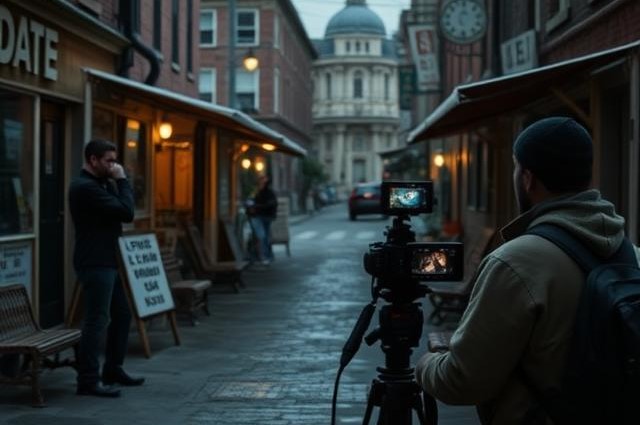Writing Interesting Short Films
 The classic three-act structure, while effective for feature-length films, often isn’t the
best fit for short films. Here’s my perspective on this.
The classic three-act structure, while effective for feature-length films, often isn’t the
best fit for short films. Here’s my perspective on this.
Why the Three-act Structure May Not Work
Time constraints: Short films typically run 5-30 minutes, which doesn’t allow enough time to fully develop three distinct acts.
Pacing issues: Trying to fit a complete three-act structure into a short timeframe can result in rushed storytelling and underdeveloped characters.
Lack of complexity: Short films often focus on a single idea or moment, which doesn’t require the elaborate setup and resolution of a three-act structure.
Alternative Approaches
Single-act structure: Focus on a single, impactful moment or event, exploring it in depth.
Two-act structure: Present a situation and its resolution, or a before-and-after scenario.
Circular structure: Begin and end at the same point, with the journey in between providing the story’s meat.
Vignette-style: Present a series of loosely connected scenes that build to a thematic conclusion.
Twist ending: Build tension throughout, leading to a surprising or revealing conclusion.
Key Considerations for Short Film Scripts
-
Start as late in the story as possible
-
Limit the number of characters and locations
-
Focus on visual storytelling rather than dialogue
-
Aim for a strong, memorable ending
Ultimately, the best structure for your short film will depend on your specific story and what you’re trying to achieve. Don’t be afraid to experiment with different approaches to find what works best for your narrative. Let’s get more specific.
Here are some specific techniques for writing a compelling short film script, drawn from expert advice:
Focus on a Small, Specific Idea
Choose a concise and significant idea that fits the short format. Avoid complex, feature-length concepts that lead to “narrative cram” and instead focus on a single moment or event that resonates emotionally.
Craft Relatable, Complex Characters
Develop characters with clear, meaningful wants or goals. Their desires drive the story and create opportunities for both external action and internal transformation.
Start Strong and Keep It Short
Begin your story immediately with an inciting incident on page one. Avoid lengthy setups and get straight to the action or conflict.
Aim for brevity—short films are most effective when they are truly short (under 30 minutes), as this increases their chances of being screened at festivals.
Enter Late, Leave Early
Write scenes that begin as close as possible to the moment of change and end immediately after it. This keeps the pacing tight and avoids unnecessary exposition.
Show, Don't Tell
Use visual storytelling rather than dialogue to convey emotions, themes, and actions. Let the camera reveal critical details through meaningful actions or visuals rather than explicit explanations.
Create a Pattern of Change
Design your story around moments of transformation—both external events and internal character arcs. These changes should build toward a satisfying climax that resolves the central conflict.
Emphasize Emotional Connection
Give your audience something to feel by crafting relatable situations or universal themes. The emotional core of your story is what will make it memorable.
Use Unique Concepts
Stand out by choosing innovative ideas or fresh perspectives. Avoid clichés or trends and aim for originality in your story’s premise or execution.
Keep Formatting Professional
Follow proper screenplay formatting rules to make your script easy to read and industry-standard.
By applying these techniques, you can create a concise, impactful short film script that resonates with audiences while showcasing your storytelling skills.
A Final Note
Making good short films is hard and still a lot of good ones are made every year. Validation by Kurt Kuenne was made 16 years ago. What do you tihnk about it? I certainly thing that a good camera is the last thing you need.